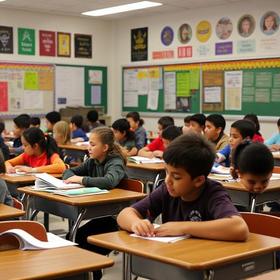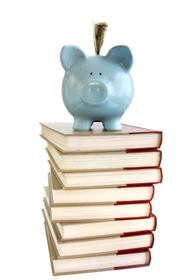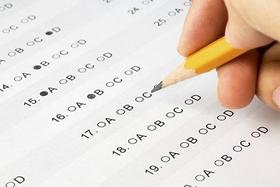Serving 640 students in grades 6-8, Glen Meadow Middle School ranks in the bottom 50% of all schools in New Jersey for overall test scores (math proficiency is bottom 50%, and reading proficiency is bottom 50%).
The percentage of students achieving proficiency in math is 34% (which is lower than the New Jersey state average of 38%). The percentage of students achieving proficiency in reading/language arts is 41% (which is lower than the New Jersey state average of 49%).
The student-teacher ratio of 13:1 is higher than the New Jersey state level of 11:1.
Minority enrollment is 25% of the student body (majority Hispanic), which is lower than the New Jersey state average of 62% (majority Hispanic).
Quick Facts (2025-26)
- Grades: 6-8
- Enrollment: 640 students
- Student-Teacher Ratio: 13:1
- Minority Enrollment: 25%
- Overall Testing Rank: Bottom 50% in NJ
- Math Proficiency: 34% (Btm 50%)
- Reading Proficiency: 41% (Btm 50%)
- Science Proficiency: 15% (Btm 50%)
- Source: National Center for Education Statistics (NCES), NJ Dept. of Education
Top Rankings
Glen Meadow Middle School ranks among the top 20% of public schools in New Jersey for:
Category
Attribute
Student Attention
School Overview
Glen Meadow Middle School's student population of 640 students has declined by 5% over five school years.
The teacher population of 51 teachers has declined by 29% over five school years.
Grades Offered
Grades 6-8
(No virtual instruction)
(No virtual instruction)
Total Students
640 students
Gender %
Total Classroom Teachers
51 teachers
School Rankings
Glen Meadow Middle School ranks within the bottom 50% of all 2,184 schools in New Jersey (based off of combined math and reading proficiency testing data).
The diversity score of Glen Meadow Middle School is 0.41, which is less than the diversity score at state average of 0.72. The school's diversity has stayed relatively flat over five school years.
Overall Testing Rank
#1374 out of 2184 schools
(Bottom 50%)
(Bottom 50%)
Math Test Scores (% Proficient)
34%
38%
Reading/Language Arts Test Scores (% Proficient)
41%
49%
Science Test Scores (% Proficient)
15%
23%
Student-Teacher Ratio
13:1
11:1
American Indian
n/a
n/a
Asian
2%
11%
Hispanic
16%
34%
Black
3%
14%
White
75%
38%
Hawaiian
n/a
n/a
Two or more races
4%
3%
All Ethnic Groups
Participates in the National School Lunch Program (NSLP)
Yes
Eligible for Free Lunch
14%
32%
Eligible for Reduced Lunch
7%
6%
School Statewide Testing
School District Name
Source: National Center for Education Statistics (NCES), NJ Dept. of Education
Profile last updated: 02/09/2025
Frequently Asked Questions
What is Glen Meadow Middle School's ranking?
Glen Meadow Middle School is ranked #1374 out of 2,184 schools, which ranks it among the bottom 50% of public schools in New Jersey.
What percent of students have achieved state testing proficiency in math and reading?
34% of students have achieved math proficiency (compared to the 38% NJ state average), while 41% of students have achieved reading proficiency (compared to the 49% NJ state average).
How many students attend Glen Meadow Middle School?
640 students attend Glen Meadow Middle School.
What is the racial composition of the student body?
75% of Glen Meadow Middle School students are White, 16% of students are Hispanic, 4% of students are Two or more races, 3% of students are Black, and 2% of students are Asian.
What is the student-teacher ratio of Glen Meadow Middle School?
Glen Meadow Middle School has a student ration of 13:1, which is higher than the New Jersey state average of 11:1.
What grades does Glen Meadow Middle School offer ?
Glen Meadow Middle School offers enrollment in grades 6-8 (No virtual instruction).
What school district is Glen Meadow Middle School part of?
Glen Meadow Middle School is part of Vernon Township School District.
School Reviews
2 10/10/2025
I wouldn't recommend this school, both due to overcrowding and due to the school atmosphere. There is a lot of bullying, vindictiveness, and general unhappiness. Students are bribed with rewards and prizes to meet the minimum levels of acceptable behavior, as opposed to actually making them better citizens and students. The atmosphere on the busses is particularly bad, loud and borderline unsafe, with minimal supervision. There is little talk of college prep or selecting an area of study or a career. There is little SAT or PSAT prep, to get students ready for their high school and college years. You get the distinct impression the school district just wants to get the kids through the district and out, with little concern for their further careers or education beyond that point. Oh, and the class sizes are huge while school taxes are high. Per capita spending per student is also high, higher than surrounding districts, with little to show for it. Your child will probably do better and be happier at a different school.
1 10/10/2025
This school Removed I hate it.
Review Glen Meadow Middle School. Reviews should be a few sentences in length. Please include any comments on:
- Quality of academic programs, teachers, and facilities
- Availability of music, art, sports and other extracurricular activities
Recent Articles

How Public Schools Support Students on Free / Reduced-Lunch Programs
Explore how U.S. public schools support students eligible for free or reduced-price lunch through nutrition, academic, and wraparound services in 2025.

Hidden Costs of Public Schools: Fees, Supplies & Extras
Explore the hidden costs in public schools—fees, supplies, extracurriculars—and how parents can plan for them in 2025.

Public School Funding 2025: What Families Should Know
Essential insights on public school funding in 2025—how it works, what’s changing, and what families should know to stay ahead.









